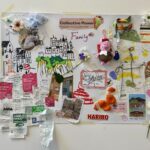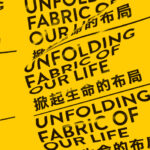Walter Benjamin, a thinker of the Frankfurt School, proposed in his essay “Works of Art in the Age of Mechanical reproduction” that before the emergence of mechanical reproduction technologies such as photography and film, traditional artworks had a unique Aura and authenticity. The advent of mechanical reproduction made it possible to mass-produce works of art. In particular, the large-scale reproduction and production of traditional handmade works such as paper-cutting have dissolved the uniqueness and spirit of artistic works.
Benjamin’s critical theory has provided me with thought: In the present digital age, are we experiencing the “disappearance of the aura”, or can we bring it back to life through new practices?
“Technology serves as a catalyst for traditional culture. Through AI, we can introduce intangible cultural heritage to a broader audience, ensuring its preservation, vitality, and transmission,” said Xuefeng Geng, Director of the Yuxian Bureau of Culture, Radio, Television, and Tourism.
Cultural heritage experts stressed that technology can act as a catalyst for traditional culture, introducing intangible cultural heritage to a wider audience through digital means, thus ensuring its heritage and vitality. In other words, mechanical reproduction technology is not completely opposed to traditional handwork, the key lies in how to use it critically.
Therefore, this exhibition will be divided into three parts.
In the first part, I will juxtapose traditional and modern elements to guide the audience to intuitively feel the dialogue between the two. Several classic folk paper-cuts are displayed at the entrance of the exhibition, allowing the audience to observe their handmade texture up close. Moving on to a demonstration of mechanical reproduction: a laser cutter demonstrates how quickly the same paper-cut pattern can be carved on the spot. In the first part, I hope to raise a question: Does mechanical reproduction really deprive art of its soul?
In the second part, I will show the artworks. It intuitively shows the audience that “tradition and modernity” and “handwork and reproduction” are not incompatible in contemporary art, but can be creatively integrated. (This will be discussed in a later blog.)
In the third part, I will create an interactive space. The audience can try it by themselves: first cut out a simple pattern with paper and scissors according to the video teaching of folk artists, and then convert it into computer graphics using digital scanning. Then generate complex patterns through the program, and finally the “digital paper cutting” work is cut out instantly by the cutting machine. The participants thus gained an intuitive understanding of how the paper-cutting art, from its original manual creativity to its digital replication, has achieved a rebirth through the transformation of media.
Reference
Benjamin, W., 2018. The work of art in the age of mechanical reproduction. In A museum studies approach to heritage (pp. 226-243). Routledge.
Wang, Y. (2025). Infuse Intangible Cultural Heritage with New Technology: When AIGC Meets China’s Yuxian Paper Cutting – JD Corporate Blog. [online] JD Corporate Blog. Available at: https://jdcorporateblog.com/infuse-intangible-cultural-heritage-with-new-technology-when-aigc-meets-chinas-yuxian-paper-cutting/ [Accessed 24 Mar. 2025].



